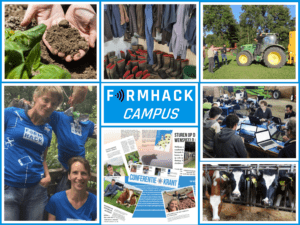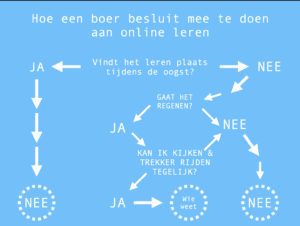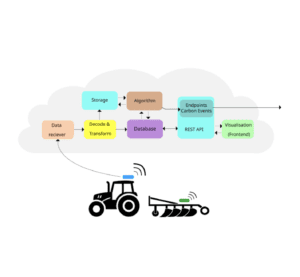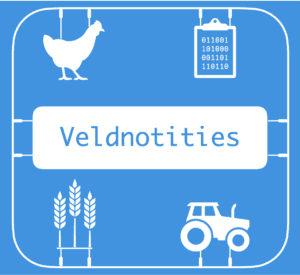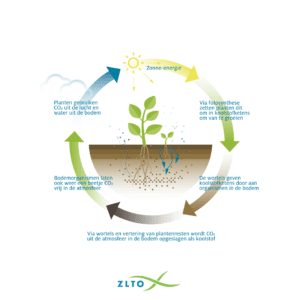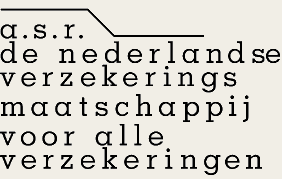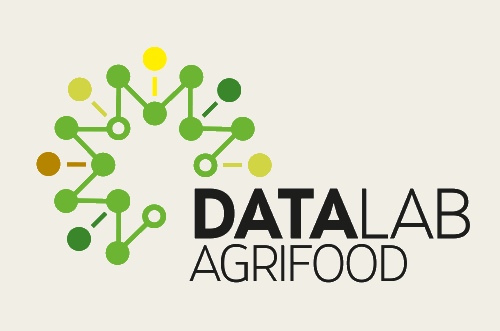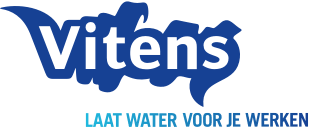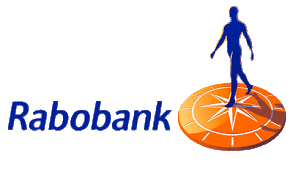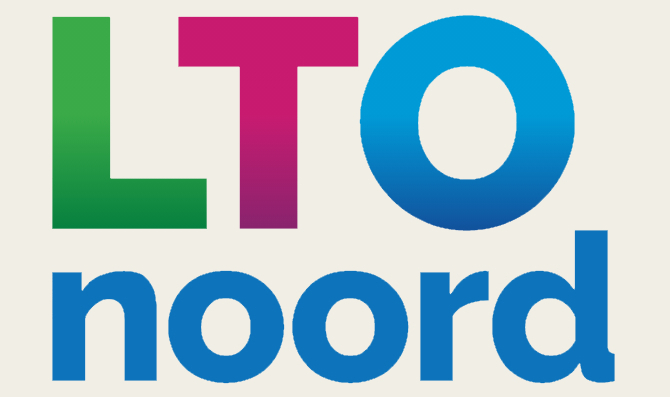
Door Linda Haartsen
Resultaten Trekkerhack
Hi! before you dive into the results, we would like to point out that we have a dedicated forum for an open debate on all things Isoblue and Machine Data (more topics will follow in the future). If you want to join in, we hope to see you there!
The Trekker Hack started at 9am at tree nursery Fleuren in Baarlo. After some time the connection was clear with Groningen, so everybody got their coffee and took place. Fleuren already exists more than 90 years and Han Fleuren is the fourth generation of the company. Han introduces the company by telling about the tree nursery, its history and the relevance of data from machines and weather stations for their company. Yannick Smedts (an employee at Fleuren) gave us some details about the importance of soil and how they collect data. For example, there is a quad which is used at the tree nursery pulling a ground conductivity meter which gives information about the soil at the depths of 0.5 m and 1m. The generated heat maps show differences in structure and nutrients. This can also be useful in case of land rental from other farmers.
The goal of the Trekker Hack is to read and implement machine data from CANbus and ISObus. Fleuren already uses a system for reading CANbus made by Beyer automotive. This company are trying to read CANBus data from specific tractor brands like Fendt, New Holland and Steyer. Tjakko van Kampen offers data from Beyer automotive and was available to help the teams. Beyer automotive also offers the opportunity to experiment with ISOBlue; an open source device developed by the University of Purdue to read ISOBus data. Auke Sytsema and Roel Postema have been working on getting the first Dutch ISOBlue running.
We worked on four challenges with four different teams (more explanation below):
- The first Dutch ISOBlue
- Visualizing and layering of multiple datasets
- Mapping tractor activities
- Measuring hitch resistance
After a fast beginning, we had lunch outside. Fresh air and delicious food gave us the energy to keep up with the challenges during the afternoon. After some hours we had a presentation from CNH Industrial, talking about digital farming. We had some time to ask questions how CNH collects data and why they don’t want to share (all of) the data with the farmers. Before we had diner, we got a tour at the tree nursery Fleuren, which was very interesting.
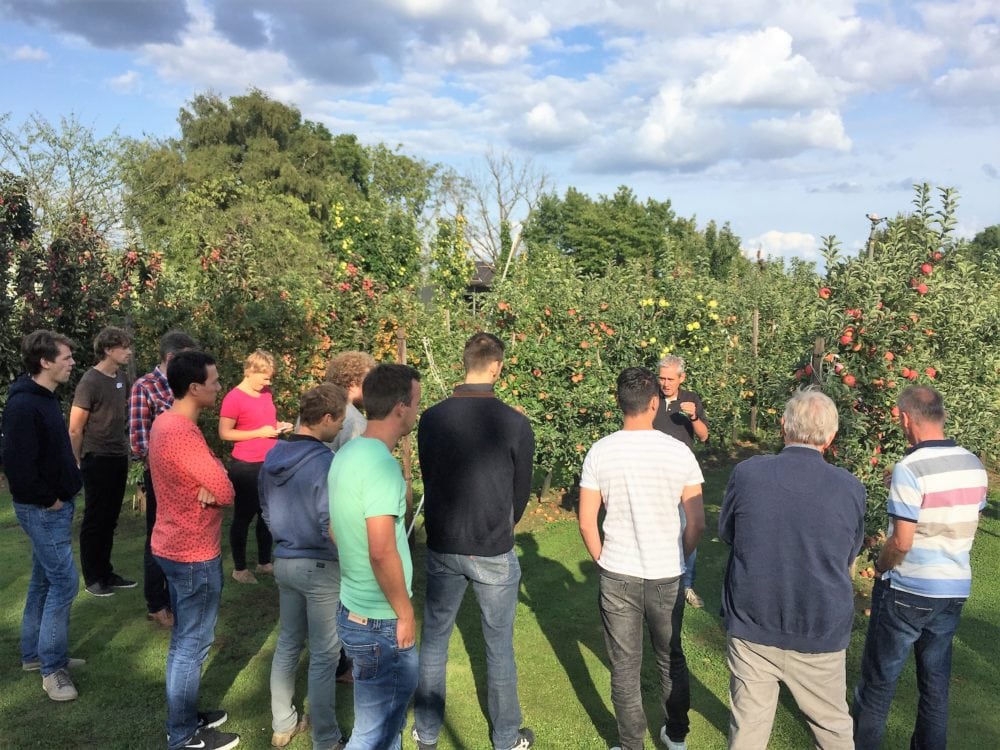
The tour at Fleuren tree nursery
After dinner most of the farm hackers continued with their work till around 10pm. Some were still programming, others were having discussions about the future of agriculture in a digital world and how we could make sure the farmer gets and stays in control of his data.
The next day the group was smaller. A bit of programming was done and at the end of the morning the results were discussed. Although this hackathon did not result in a finalized program or product, the participants were all pleased with the way it resulted in inspiring discussions and nice collaborations which lead to a good network of relations and a base for achieving the mission of FarmHack.
Results
Challenge 1: Dutch ISOBlue
The ISOBlue team consists of the following members: Auke, Roel, Christiaan Verhoef, Martijn Thé, Marius Voshart, Jan and Marijn van Rossum. The team will be addressing two issues:
- Gathering data
Auke and Roel are completing the built of the ISOBlue. To get the GSM working the linux kernel needs to be updated. Yang Wang from ISOBlue is contacted through skype, he is helping to program the device from the USA. At the end of the evening Auke and Roel got the ISOBlue running in the Steyr tractor. The data was logged and is ready to be read and translated. - Data translation
Christiaan and Martijn have downloaded data streams from the ISOBlue.org website in order to start reading and translating. They both got stuck near the end of the decoding process described on the ‘how to read the data’ page. The streams are to be read with Apache Kafka, which makes it more difficult since they are not familiar with this platform.
Challenge 2: Visualizing and layering of multiple datasets
The team consists of the following members: Bram Hoendervangers and Justin Steenhuis who works for Van Aaken, an agricultural software company. The team addressed the following issues:
During the hackathon Bram and Justin looked at the data coming from the Beyer platform and transformed it into GeoJson so that we were able to visualize soil resistance, tractor speed and tractor engine RPM on a heatmap that showed the fields of Fleuren.

Van Aken heatmap
Challenge 3: Mapping tractor activities
The team consists of the following members: Yash Kulkarni, Peter-Jan van Ham, Yannick, Han Dirksen. This team is a collaboration with people who works at Multi Tool Trac, which build tractors with better yield and better performance. During the hackaton they tried to get more duty cycles from a tractors throughout the year, so they can implement them. Yash explains more about the challenge at the FarmHack forum.
Challenge 4: Measuring hitch resistance
This team was not available to travel all the way to Baarlo, so they came together in the province Groningen. The team consists of the following members: Derk, Pieter and Simeon Nedkov. Pieter van Maldegem and Derk Gesink are fellow farmers who are working together with other farmers. They are very interested in the possibilities of precision farming, so they made a team aGroFuture. During the hackaton they wanted to get the data from there tractor, specifically the resistance on the hitch. With the combination of GPS they can get an indication of the soil compaction at their fields.
The problem from Derk is that his Case tractor collects data, which cannot combine with the data from the TRIMBO (GPS system) that he is using on his Case. That’s where ISOBus and Beyer automotive come in. The system/company using GPS without RTK so they integrate the data from the hitch resistance. The combination of x-y coordinate, hitch resistance, and fields makes it possible to create a map. Still there are some points of interest, cause there are many different tractor brands and are there difference between the signal-id’s from the vehicles?
A few days later Pieter figured it out to get a map with some hitch resistance;
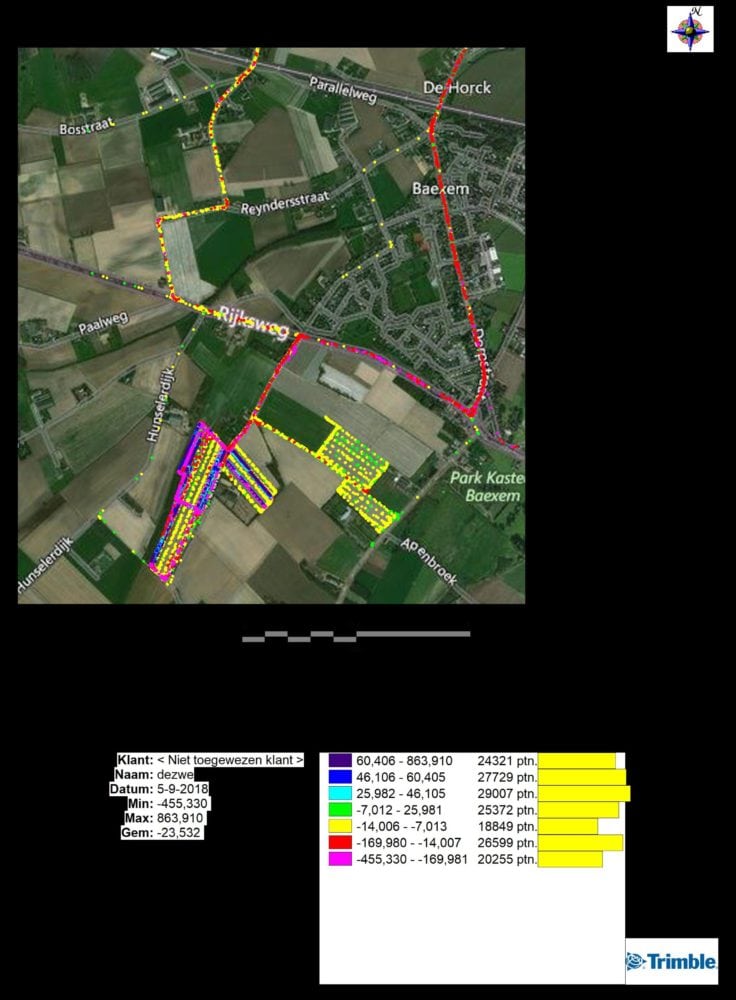
Pieters map with hitch resistance
Conclusion
The TrekkerHack helped us to find useful information and data, explore possible collaborations and solutions. Still, many questions remain. We will continue on our journey. You can keep in touch by checking in at the FarmHack forum! We will be posting details on a follow up meeting shortly.
Han Fleuren, Yannick: thanks again for having us and inspiring us, we will be in touch!


